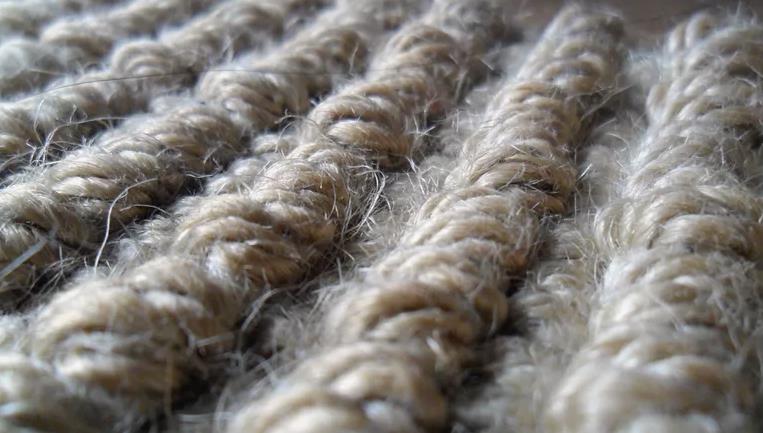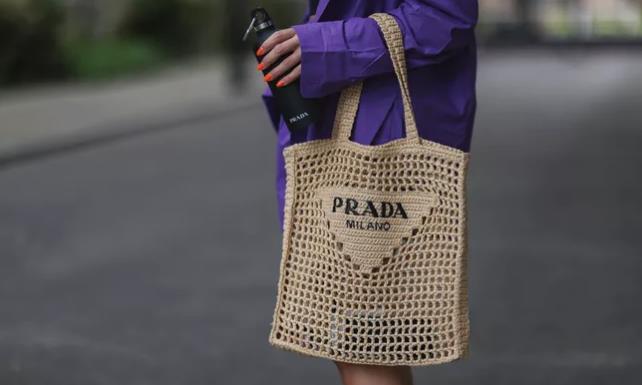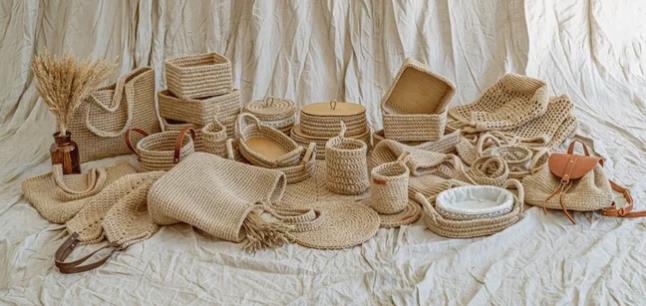Introduction
Jute is a natural fabric that is quite versatile and very eco-friendly.
Traditionally used to make durable items like rugs, curtains, rope and shopping bags, this fabric is popular in Asia, especially countries like India and Bangladesh.
However in recent times a number of western countries have begun to recognize its potential.
What is jute fabric?

Jute fabric is a type of textile fiber that derives from the jute plant.
Predominantly harvested in Asian countries like Bangladesh and India, jute is a long, and naturally soft fiber.
However when spun, it transforms into strong and coarse threads that can be used to manufacture a range of different textile materials.
As it is very tough and durable, and has a rather rough feel to it, jute is not widely used in the manufacture of clothing items. Instead it is used to make things like rope, burlap bags, sacks and curtains.
The jute plant is cultivated in similar conditions to rice grains and needs plenty of rainfall to flourish. However if it gets it, then it is capable of exceeding 10 feet in height.
This makes it is one of the most elongated plant-based textile fibers available to manufacturers. Which perhaps explains why it is the second most common fabric in the world behind cotton.
History of jute
It may surprise you to learn that jute has been used to make textiles in India for over 5000 years. With some experts presenting evidence of its existence dating back to 3000 BC.
For centuries the people of Bangladesh and Bengal used jute to make textile materials required for their everyday life.
However by the seventeenth century, the British, having cottoned on to the usability of this material, started to trade in jute.
During the ruling of the British Empire, jute fabric was a vital commodity. With more than a billion jute sandbags being commissioned, to send to the military for the trenches of World War I. Or being shipped to the south of the USA to bag cotton.
Initially, jute fabric was hand produced. However when it was discovered in Dundee, (who had their own jute industry), that treating it with whale oil made it easier to process by machine, the industry really started to flourish.
Where is jute grown?
Also known as ‘the golden fiber’ jute is a naturally long, soft and shiny fiber.
It is almost exclusively manufactured in Bangladesh, India and Pakistan, with about 85% of it centering around the Ganges River Delta. An area that spans most of Bangladesh and some of the Bengal region of India.
Attributes of jute fabric?
Jute fabric is known for being coarse, tough and very robust.
It is also very eco-friendly as it is organically grown, biodegradable and can be recycled.
An extremely versatile fiber, jute fabric can be used to make a range of products for textiles, agriculture, packaging and other non-textile products.
Often referred to as the ‘golden fiber’ it is known for having a silky and golden sheen.
Though jute absorbs water fairly easily, it also dries quickly too. In addition it is very resistant to abrasion and stains.
Unfortunately, as it is plant-based, it can biodegrade quite rapidly. So it is not renowned for being a long lasting material for outdoor applications.
How is jute fabric made?
The process of making jute fabric is a highly technical process. But it roughly takes place over the following stages:
- They are initially harvested as stems from the jute plant.
- These stems undertake a process called retting. This involves sub-merging the stems in slow-running water for a period of between 10 to 30 days. This allows bacteria to fully dissolve the gummy substance which holds all the fibers together.
- When the process of retting is complete, the fibers present in the stem remain. They can be separated from the non-fibrous matter by hand in a process known as stripping.
- After stripping, the stem is beaten with a paddle to separate the fibers.
- These separated fibers are then washed, dried, and finally graded before being sent to jute mills to produce yarn. The yarn is what is used to manufacture the jute fabric products.
What is jute fabric used for?

Jute fabric is traditionally used to make products that are strong and durable. This includes carpets, curtains, bags and rope.
Jute is also synonymous with burlap. For hundreds of years burlap bags have been used to hold heavy items like vegetables, fruits and other goods.
Burlap has also been used as an insulative material during colder months too.
On account of its toughness and durability, jute is also often used in general homeware products. It is especially popular for upholstery, and in particular outdoor furniture, as well as curtains and canvases. You will find jute in linoleum tile flooring too.
Jute is also an important fabric for the army, as it is a major component of ghillie suits, which are a highly advanced form of camouflage that enables soldiers to blend into thick grass like environments.
In addition to this, jute fabric is often used to make the protective wrappings around sapling roots, when these young trees are planted.
What different types of jute fabric are there?
Overall there are four types of jute that can be used in the production of textiles. They can be characterized as follows:
- White Jute
White jute was once the main textile used to dress the poorer people of the Bengal area of India.
Lighter in color, it is much less durable than other types of jute, so not used as much.
- Tossa Jute
Tossa jute is the most popular type of jute manufactured today.
A much hardier crop, it yields a lot more fiber than white jute does. Its color is a shade more akin to brown.
- Mesta Jute
Mesta jute is a mix of both the white and tossa types of jutes.
- Jute Cuttings
Jute cuttings come from the leftovers of what was used in the original of production of jute fabric products. They are used to make very basic textiles.
Is jute fabric environmentally friendly?
Jute is one of the world’s most eco-friendly fibers to manufacture. One of the reasons for this is that it is completely biodegradable.
Also not only can it absorb carbon dioxide and release oxygen even quicker than trees are able to, it can grow organically without the need of pesticides or fertilizers.
This makes it very sustainable too.
Is jute stronger than cotton?
Jute fabric is actually much stronger than cotton.
Cotton fibers tend to be very soft, a little fluffy and very delicate, whilst jute fibers are strong, tough, durable and coarse.
Crucially, cotton can stretch and tear easily. But jute fibers, if maintained properly, tend to retain their original shape.
Is jute fabric comfortable to wear?
As a general rule jute fabric is not comfortable to wear when the clothing item makes direct contact with your skin. Its rough texture can feel a bit abrasive.
That said, in recent times, manufacturers around the world have started making clothing items like sweaters and jackets with jute.
Is jute fabric suitable for summer?
As mentioned, jute fabric is not used in the production of clothing apparel, because it can be abrasive to the skin. Something that would be exacerbated in the summer months.
Unfortunately it is not a fabric that fairs well in the high humidity of summer climates, as it can often become afflicted with mold if not cared for properly.
What are the advantages of jute?
Jute fabric has a number of advantages. Not only is it 100% eco-friendly, it is also biodegradable and sustainable too.
In addition, it is one of the strongest natural vegetable fibers available and is also very cost effective too.
The fabric can also be dyed and printed, as well as being blended with both natural and synthetic fibers – which is great from a design perspective.
What are the disadvantages of jute?
Jute does have some disadvantages. Unfortunately it does not stand up well to high humidity and can often get moldy or stained.
It also can not be machine washed. Given that jute is a natural fiber it can often fully disintegrate if submerged in water for prolonged periods of time.
How is jute fabric maintained?

The best way to maintain jute fabric it is by handwashing.
You will need to use lukewarm water and be very careful whilst cleaning it.
When wet be sure not to squeeze the fabric, as this may damage the fibers.
Also do not wash your jute with other fabrics. It may shed fibers onto other clothes which might prove stubborn to remove.
How much does jute fabric cost?
Jute fabric is one of the world’s cheapest textiles to produce.
As a general rule the fabric typically costs about $1 per yard. However, other bespoke forms of jute may be a bit more expensive.
This price is similar to cotton, and considerably less than most other types of synthetic fabrics.
Is jute fabric fine for people with allergies?
Jute fabric does not possess any significant threat to humans or animals.
Infact, as a natural repellant of dust mites, jute fabric is the perfect material to use in your home for items like rugs, curtains, carpets and ropes, if you have dust allergies.
This is especially true in hot and humid countries.
The future of jute fabric?
Although traditionally used in the production of items like rugs, ropes and burlap, many clothing brands and designers, particularly those based in western countries, are starting to realize the impact of ‘fast fashion’ on the environment.
Therefore in looking for new eco-friendly fabrics, it is conceivable they may incorporate jute fabric in more of their designs.
How does jute fabric impact on the environment?
Jute fabric is an eco-friendly fiber that impacts very positively on the environment.
Not only does it grow organically without the need for fertilizers, it is also very sustainable as it returns nutrients to the soil.
Being fully biodegradable, it does not damage the environment in any way either. Perhaps best of all, it is also recyclable too.
Conclusion
Jute fabric is the second most popularly manufactured fabric in the world behind cotton.
For over 5000 years it has enjoyed a prominent role in the production of many textile products, in India and Bangladesh especially.
However as the world moves increasingly towards sustainability and eco-friendliness, perhaps it’s about to become the number one?
